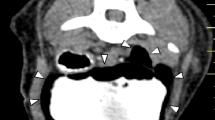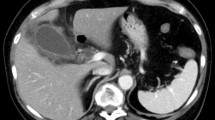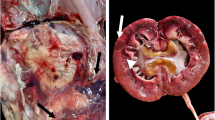Abstract
Bckground
Edwardsiella tarda, an Enterobacteriaceae family member, is prevalent in different aquatic settings and rarely infects humans. As a result of eating raw or undercooked seafood, humans become infected through their intestinal tracts. Extraintestinal infections have been reported infrequently, mostly in immunocompromised and chronically ill patients.
Case presentation
Our report describes a case of urinary tract infection caused by E. tarda in a 4-year-old female patient with a history of urinary tract infection and a complaint of fever, dysuria, and frequency. E. tarda was identified as the pathogen isolated from the urine culture. The patient's symptoms were alleviated after receiving ceftriaxone and then nitrofurantoin.
Conclusion
This case demonstrates that even in immunocompetent patients, E. tarda can infect extraintestinal organs, including urinary tract. Our patient represents the first case of E. tarda infection in Iran and due to the fact that this pathogen is transmitted by aquatic animals, there is a possibility of infecting more aquatic animals and humans in Iran; therefore, the necessary precautions should be taken.
Similar content being viewed by others
Background
Edwardsiella tarda is a gram-negative, facultative anaerobe belonging to the Enterobacteraceae family [1]. This bacterium is an unusual human pathogen and has been cultured from the samples of human feces, blood, urine, cerebrospinal fluid, bile, peritoneal fluid, and wounds [2,3,4]. It is prevalent in water systems and is widely recognized as a pathogen of aquatic organisms [5]. E. tarda infection risk factors include exposure to these organisms and consumption of contaminated foods, such as sushi, raw fish, and raw meat [3, 6]. In humans, an infection with E. tarda typically manifests as enteritis. However, extra-intestinal infections including soft tissue infections, septicemia, hepatobiliary infections, meningitis, and osteomyelitis have also been reported [7].
Urinary tract infection (UTI) is one of childhood's most common bacterial infections [8]. Enterobacteriaceae families are the most common causes of UTIs. The most frequent organism is Escherichia coli, which can cause UTIs in 80 to 90% of children [9]. However, sometimes UTIs can be caused by an atypical microorganism [10]. E. tarda is an extremely uncommon UTI cause. E. tarda is typically responsible for UTIs in immunocompromised patients and those with a urethral catheter. To date, no cases of E. tarda-associated UTIs have been reported in children. In this study, we described a 4-year-old child with prior medical history of recurrent UTI, with the complaint of dysuria and polyuria, and a final diagnosis of UTI caused by the E. tarda microorganism.
Case presentation
A four-year-old girl who had been experiencing fever, frequency, and dysuria for a week was brought to the pediatric clinic. Her parents also mentioned having a headache beginning from 5 days ago. Nausea, vomiting, diarrhea, and abdominal pain were not mentioned. She was first in birth order and was delivered vaginally at 39 gestational weeks. Her birth weight was 3630 g, and measurements of her weight (16 kg), height (98 cm), and head circumference (48 cm) were normal. Her family did not recently have any gastrointestinal or urinary complaints. She was toilet trained but had infrequent voiding. She had no recent history of traveling or playing in rivers or seawater. The mother of the patient mentioned the patient's consumption of salmon over the last month, which did not result in any gastrointestinal issues. A common goldfish was kept in a tank in residence for almost 2 weeks, and it died about a week ago. The patient’s parents stated that she had put her hand into the fish tank several times. The child had been hospitalized twice for UTI since last year. During the second hospitalization, which was 8 months ago, a voiding cystourethrogram was conducted for the patient, and no signs of vesicoureteral reflux were observed.
On arrival, the patient's general condition was good. Her vital signs were heart rate of 98 beats per minute, 115/65 mmHg blood pressure, respiratory rate of 23 breaths per minute, oxygen saturation of 97% in ambient air, and 38.6 °C axillary temperature. During the examinations, no costovertebral tenderness was detected. Neck rigidity was also negative. The examination of the abdomen and genital area revealed no notable findings.
According to a urinalysis performed four days prior at a different center, the patient's urine specimen contained 3–4 red blood cells, many white blood cells, and many bacteria per high-power field, as well as 1+ protein and positive nitritite. Urine culture (UC) had also been performed, and the results revealed E. tarda species of more than 100,000 colony-forming units resistant to cefixime, ciprofloxacin, cotrimoxazole, and nalidixic acid, but sensitive to meropenem, tetracycline, and nitrofurantoin. However, the blood culture was negative. According to a later call made to the center's microbiologist for diagnostic information, the specimen was cultured on MacConkey and blood agar containing 5% sheep red blood cell, and it was later determined to be E. tarda via chemical tests as follows: The organism was motile and rod-shaped, and hydrogen sulfide production and indole production tests were positive for the organism. Mannitol could not be fermented by the organism, but glucose could. Additionally, the urease, O-nitrophenyl-beta-d-galactoside, cytochrome oxidase, citrate, and Vogeus-Proskauer (VP) tests yielded negative results. Figures 1, 2 and 3 illustrate a portion of the urine culture findings.
The patient's parents had been advised to bring their child to the children's hospital for treatment. Prior to admittance, the patient had not been administered any medication. The patient was hospitalized due to her symptoms and the above tests. Initial blood tests revealed a white blood cell count of 11.93 × 103/µL with a differential of 59% neutrophils and 36% lymphocytes, hemoglobin level of 13.32 gr/dL, platelet count of 359 × 103/µL, blood sugar level of 96 mg/dL, and C-reactive protein level of 3+. Due to the patient's headache complaint, which did not improve despite medication use at home, a magnetic resonance imaging of the brain was performed, which indicated no abnormalities.
The patient was administered 600 mg of intravenous ceftriaxone every 12 h along with fluid therapy. On the second day of hospitalization, due to the elimination of fever and improvement in the patient's symptoms, the patient was discharged with the instruction to take nitrofurantoin suspension 25/5 mg, 9 cc every 8 h for 1 week. After a week, the urinalysis results were as follows: 3–4 white blood cells, 0–1 red blood cell, and no bacteria per high power field, and also negative protein and nitrite. The UC revealed no growth after 24 h.
Discussion and conclusions
Edwardsiella tarda is an uncommon pathogen from the Enterobacteriaceae family that can rarely infect humans. The human infection rate is 0.0073% in Japan and 1% in Panama. According to a cohort study conducted in Japan between January 2005 and December 2016, the incidence rate of E. tarda is 0.02%, and the mortality rate within 90 days is 26.9% [3, 7, 11].
Clinical complications of E. tarda infection are enteritis, liver abscess, cholecystitis, spontaneous bacterial peritonitis, mycotic aneurysm, necrotizing fasciitis, empyema, osteomyelitis, psoas abscess, spinal epidural abscess secondary peritonitis and UTI [12, 13].
Our patient is the first case of human E. tarda infection in Iran and the second in the Middle East. According to the reports, E. tarda infection cases are mostly reported in East Asia, Australia, North and South America [3].
Edwardsiella tarda infection frequently occurs when water temperatures are high, particularly from summer to autumn [14]. It is more common in the elderly, with an average age of 61 years [3]. In contrast, our patient was a 4-year-old child with E. tarda infection in spring.
Intestinal symptoms such as gastroenteritis are the most frequent manifestations of E. tarda infection [15]. Although E. tarda is a rare human pathogen, immunocompromised patients and those with subacute or chronic diseases have a higher incidence of extraintestinal infection [16]. Tamada et al. reported the first case of urosepsis by E. tarda in 2009 [12]. The patient was a woman undergoing chemotherapy for advanced uterine cancer. In a study of E. tarda infection in Thailand, the organism was isolated from 13 patients with urinary tract infection, none of which were associated with bacteremia, and the majority of patients had chronically indwelling urethral catheters [17]. Our patient, in contrast, had no history of chronic illness or medication or urethral catheter use.
Although E. tarda produces β-lactamase, it rarely displays resistance to β-lactam antibiotics [18]. Antibiotics with activity against Gram-negative bacilli, such as the majority of β-lactams, aminoglycosides, tetracyclines, fluoroquinolones, and antifolates, are effective against nearly all E. tarda strains [12]. However, in our case, the isolated E. tarda strain was resistant to cefixime, cotrimoxazole, and fluoroquinolones. Penicillins, cephalosporins, and carbapenems are frequently used in the treatment of E. tarda [3]. Our patient was also initially treated with ceftriaxone, which resulted in the improvement of the patient's symptoms.
Historically, E. tarda has been identified in a wide variety of reptiles, amphibians, and fish, including catfish and eels, in both fresh and brackish water settings, and it can also cause disease in these animals [13]. According to the research carried out by Preena et al., E. tarda is one of the pathogens that can infect goldfish species and cause 100% mortality in these fish [19]. In addition, this pathogen poses a serious threat to aquaculture globally. Contact with goldfish is likely to cause illness in humans [3]. Likewise, our patient was frequently exposed to goldfish prior to the onset of symptoms. Additionally, the goldfish died after a short time, which could be indicative of infection by E. tarda.
Goldfish is one of the 7 Haft Seen items in Iran. Haft Seen is an arrangement of seven symbolic objects that is customarily displayed during the Nowruz holidays beginning on March 21. Goldfish are indigenous to China. According to government accounts, it has been brought from China to Iran in past years due to cultural requirements. In recent years, however, it has been widely cultivated in Iran. Also, each year following the Nowruz holiday, people release millions of these fish into the rivers and lakes of Iran [20]. This is also a significant concern in the United States and Canada. In 2015, for instance, the Canadian government urged people to stop releasing fish into lakes. Considering that goldfish carry several parasites and can reproduce rapidly in harsh environments, they pose a threat to the ecosystem. It is recommended to prevent the release of this type of goldfish in nature. Regular veterinary care is also required for goldfish [21].
This case demonstrates that E. tarda can be a urinary pathogen and can induce extraintestinal infection even in individuals with a healthy immune system. Our patient is the first known case of Edwardsilla infection in Iran, and since aquatic animals spread this pathogen, there is a likelihood that other humans and aquatic animals will become infected in Iran. As a result, the appropriate safety measures should be adopted, including preventing contact with aquatic organisms and consuming raw or undercooked fish and seafood, as well as isolating fish that may be suspicious or infected from others.
Availability of data and materials
Data will be provided by the corresponding author on request.
Abbreviations
- E. tarda :
-
Edwardsiella tarda
- UTI:
-
Urinary tract infection
- UC:
-
Urine culture
References
Janda JM, Abbott SL. Infections associated with the genus Edwardsiella: the role of Edwardsiella tarda in human disease. Clin Infect Dis. 1993;17(4):742–8.
Janda J, Abbott S, Kroske-Bystrom S, Cheung WK, Powers C, Kokka R, Tamura K. Pathogenic properties of Edwardsiella species. J Clin Microbiol. 1991;29(9):1997–2001.
Hirai Y, Asahata-Tago S, Ainoda Y, Fujita T, Kikuchi K. Edwardsiella tarda bacteremia. A rare but fatal water- and foodborne infection: review of the literature and clinical cases from a single centre. Can J Infect Dis Med Microbiol. 2015;26(6):313–8.
Clarridge JE, Musher DM, Fainstein V, Wallace RJ Jr. Extraintestinal human infection caused by Edwardsiella tarda. J Clin Microbiol. 1980;11(5):511–4.
Litton KM, Rogers BA. Edwardsiella tarda endocarditis confirmed by indium-111 white blood cell scan: an unusual pathogen and diagnostic modality. Case Rep Infect Dis. 2016;2016:1082160.
Nishida K, Kato T, Yuzaki I, Suganuma T. Edwardsiella tarda bacteremia with metastatic gastric cancer. IDCases. 2016;5:76–7.
Wang IK, Kuo HL, Chen YM, Lin CL, Chang HY, Chuang FR, Lee MH. Extraintestinal manifestations of Edwardsiella tarda infection. Int J Clin Pract. 2005;59(8):917–21.
Simões e Silva AC, Oliveira EA. Update on the approach of urinary tract infection in childhood. J Pediatr. 2015;91(6 Suppl 1):S2-10.
Leung AKC, Wong AHC, Leung AAM, Hon KL. Urinary tract infection in children. Recent Pat Inflamm Allergy Drug Discov. 2019;13(1):2–18.
Kranz J, Wagenlehner FME, Schneidewind L. Complicated urinary tract infections. Urologe A. 2020;59(12):1480–5.
Kamiyama S, Kuriyama A, Hashimoto T. 1038 Edwardsiella tarda bacteremia: epidemiology, clinical features, and outcomes. Open Forum Infect Dis. 2018;5(Suppl 1):S310. https://doi.org/10.1093/ofid/ofy210.875.
Tamada T, Koganemaru H, Matsumoto K, Hitomi S. Urosepsis caused by Edwardsiella tarda. J Infect Chemother. 2009;15(3):191–4.
Suzuki K, Yanai M, Hayashi Y, Otsuka H, Kato K, Soma M. Edwardsiella tarda bacteremia with psoas and epidural abscess as a food-borne infection: a case report and literature review. Intern Med. 2018;57(6):893–7.
Koike M, Doi T, Iba Y, Yuda S. Edwardsiella tarda native valve infective endocarditis in a young and non-immunocompromised host: a case report. Am J Case Rep. 2021;22: e932387.
Healey KD, Rifai SM, Rifai AO, Edmond M, Baker DS, Rifai K. Edwardsiella tarda: a classic presentation of a rare fatal infection, with possible new background risk factors. Am J Case Rep. 2021;22: e934347.
Pham K, Wu Y, Turett G, Prasad N, Yung L, Rodriguez GD, Segal-Maurer S, Urban C, Yoon J. Edwardsiella tarda, a rare human pathogen isolated from a perihepatic abscess: implications of transient versus long term colonization of the gastrointestinal tract. IDCases. 2021;26: e01283.
Jaruratanasirikul S, Kalnauwakul S. Edwardsiella tarda: a causative agent in human infections. Southeast Asian J Trop Med Public Health. 1991;22(1):30–4.
Ota T, Nakano Y, Nishi M, Matsuno S, Kawashima H, Nakagawa T, Takagi T, Wakasaki H, Furuta H, Nakao T, et al. A case of liver abscess caused by Edwardsiella tarda. Intern Med. 2011;50(13):1439–42.
Preena PG, Dharmaratnam A, Swaminathan TR. A peek into mass mortality caused by antimicrobial resistant Edwardsiella tarda in goldfish, Carassius auratus in Kerala. Biologia. 2022;77(4):1161–71.
Goldfish on Haft Seen, to be or not to be? - Tehran Times. http://www.tehrantimes.com/news/421868/Goldfish-on-Haft-Seen-to-be-or-not-to-be. Accessed 2 Oct 2022.
Goldfish, facts and photos. https://www.nationalgeographic.com/animals/fish/facts/goldfish. Accessed 12 Sep 2022.
Acknowledgements
None to declare.
Funding
This research did not receive any funding.
Author information
Authors and Affiliations
Contributions
PY and MK were involved in the diagnosis and treatment of the patient. AG and RS were the principal investigators of the study. AG and RS were included in preparing the concept and design. MK and PY revisited the manuscript and critically evaluated the intellectual contents. All authors participated in preparing the final draft of the manuscript, revised the manuscript, and critically evaluated the intellectual contents. All authors have read and approved the manuscript's content and confirmed the accuracy or integrity of any part of the work. All authors read and approved the final manuscript.
Corresponding author
Ethics declarations
Ethics approval and consent to participate
Not applicable.
Consent for publication
The patient’s parents have given us written informed consent for publication as a case report.
Competing interests
The authors disclose no competing interests.
Additional information
Publisher's Note
Springer Nature remains neutral with regard to jurisdictional claims in published maps and institutional affiliations.
Rights and permissions
Open Access This article is licensed under a Creative Commons Attribution 4.0 International License, which permits use, sharing, adaptation, distribution and reproduction in any medium or format, as long as you give appropriate credit to the original author(s) and the source, provide a link to the Creative Commons licence, and indicate if changes were made. The images or other third party material in this article are included in the article's Creative Commons licence, unless indicated otherwise in a credit line to the material. If material is not included in the article's Creative Commons licence and your intended use is not permitted by statutory regulation or exceeds the permitted use, you will need to obtain permission directly from the copyright holder. To view a copy of this licence, visit http://creativecommons.org/licenses/by/4.0/. The Creative Commons Public Domain Dedication waiver (http://creativecommons.org/publicdomain/zero/1.0/) applies to the data made available in this article, unless otherwise stated in a credit line to the data.
About this article
Cite this article
Gilani, A., Sarmadian, R., Kahbazi, M. et al. Urinary tract infection caused by Edwardsiella tarda: a report of the first case in Iran. BMC Infect Dis 22, 962 (2022). https://doi.org/10.1186/s12879-022-07960-9
Received:
Accepted:
Published:
DOI: https://doi.org/10.1186/s12879-022-07960-9







